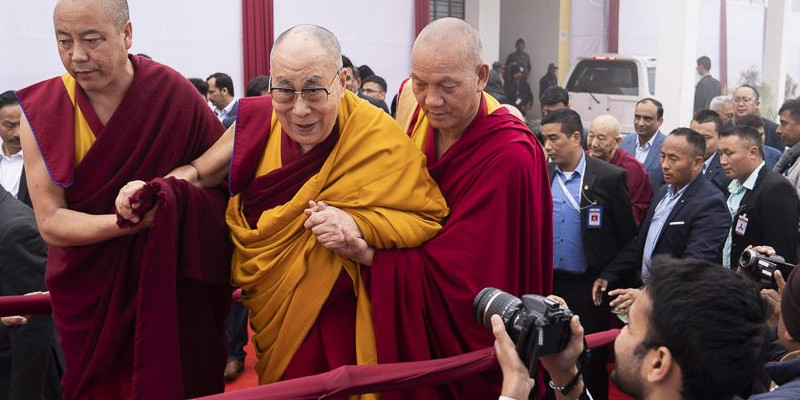The Tibetan spiritual leader His Holiness the Dalai Lama said that India’s tradition of religious harmony an example for world. While speaking to the students and faculty of Indian Institute of Management, Bodhgaya, His Holiness called for efforts to reduce violence. He spoke to a gathering of 180 students along with faculty and other guests on Tuesday.
His Holiness the Dalai Lama commended Indian culture of various religious traditions co-existing in perfect harmony. He explained since despite adopting different philosophical positions, all religious traditions carry the same important message of love. And India is an example that all traditions can live together in harmony!
“All major religious traditions carry a similar message of the importance of love. When people are motivated by loving-kindness, fighting between them is unthinkable. India’s admirable tradition of religious harmony is an example for others to follow. We may adopt different positions on a philosophical level, but, as India shows, all major religious traditions can live together peacefully and respectfully.” said His Holiness the Dalai Lama.
His Holiness advised that India is the only nation that can combine modern education, which is largely oriented towards material goals, with ‘ahimsa’ and ‘karuna’ and an ancient understanding of the workings of the mind and emotions. The more compassionate your outlook, the more you can lead your life with transparency, self-confidence and inner strength.
His Holiness added India’s practices for cultivating a calmly abiding mind—shamatha, and insight into reality—vipashyana, have produced many great thinkers. Today, our conduct needs to be guided by non-violence and motivated by compassion. Because ancient Indian philosophy and psychology is driven by reason and logic there is resonance with physics, especially quantum physics, today. This approach, exemplified by the Nalanda Tradition, is being kept alive in Tibetan seats of learning re-established in South India.

